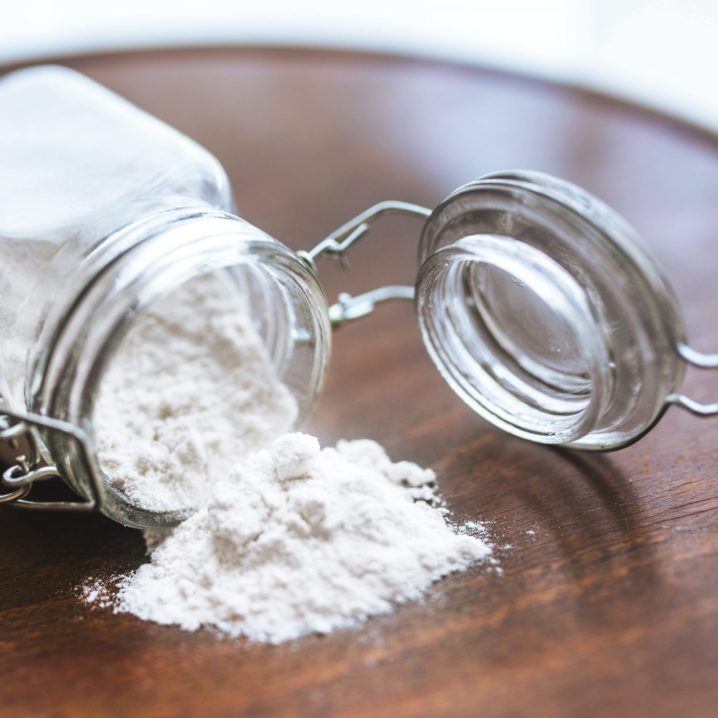
- POPSUGAR Australia
- Living
- You Can Still Bake Your Favorite Dishes Even If You Don't Have Baking Soda – Here's How
You Can Still Bake Your Favorite Dishes Even If You Don't Have Baking Soda – Here's How

We’ve all been there: you’re ready to bake, but you realize you’re out of baking soda. So what do you do if a recipe calls for the ingredient and you don’t have any? There are definitely some food hacks that will let you keep baking! Baking soda is one of the most important ingredients in many recipes. It serves as a leavening agent, which makes your cookies, cakes, and breads light and beautifully textured instead of flat and dense. You’ll want to steer clear of particularly fussy recipes (you know the type – the ones that don’t turn out right if you so much as wobble your hand while measuring!), but otherwise, there are a few options for getting leavening in your baked goods without baking soda.
Can I Replace Baking Soda With Baking Powder?
The most obvious substitute, of course, would be baking powder, which actually contains baking soda as an active ingredient. However, since the baking soda in baking powder is diluted (with cream of tartar), it doesn’t have the same leavening power, so you’ll need to use more powder than you would soda. In fact, many recipes will actually use both baking powder and baking soda. The Joy of Baking explained how the two interact when they’re in a recipe together: baking powder does the heavy lifting of actually leavening (enlarging the air bubbles that get into the batter during mixing), while baking soda neutralizes acids and helps the mixture be more tender.
According to MyRecipes, you should use triple the amount of baking powder than you would use baking soda; if a recipe calls for one teaspoon of baking soda, use three teaspoons of baking powder for a similar (though probably not identical) result. When doing this, you should also leave out the “dash of salt” that many recipes call for, since most baking powder contains a bit of salt already. But, what if you don’t have baking powder either?
Can I Replace Baking Soda With Yeast?
There’s one substitution that seems would be a natural fit, but that you absolutely should not use (except on very rare occassions). What is it? Yeast. At first glance, it seems like it would work just fine – after all, we bake with yeast as a leavening agent in some recipes, we use baking soda for the same purpose in other recipes, and some recipes can swap baking soda or powder for yeast. But, they’re not interchangeable. Baking soda and yeast add different flavors to the recipes, and they physically do the work of leavening in different ways, which changes the texture of your baked goods.
Yeast is a living organism, not a chemical compound like baking soda or baking powder, and it carries a very distinctive flavor. “[Yeast] should be utilized [in place of baking soda] when doing a substitution in a bread or cooking recipe, rather than when creating a sweet baked good, such as a cookie,” suggested flour manufacturer Bob’s Red Mill. Getting the proportions right can be tricky, too. Spiceography recommended basing the amount of yeast on the amount of flour in the recipe, rather than trying to directly match it to the amount of baking soda: use about two teaspoons of yeast per four cups of flour.
Related: 4 Easy Yeast Substitutes For Making Bread
Can I Replace Baking Soda With Other Ingredients?
Food scientist Renée Gan shared a few leavening options with Today Food in February 2020. Whipped egg whites top the list of potential leavening agents: “The proteins in egg whites lend physical structure to the baked product,” she explained. If you’ve ever made something with meringue, you know how airy and fluffy whipped egg whites can get, so it makes sense that folding them into a batter would lend some lift to the mixture. Start with two egg whites for a typical, single-batch recipe – and before you whip them up, put them in a liquid measuring cup and remove approximately the same amount of liquid from the recipe.
Club soda can also work in a pinch, although only for recipes that aren’t looking for a superlight texture. As with egg whites, this substitution doesn’t have a perfect correlation with the amount of baking soda, and bakers need to balance out this liquid by removing other liquids in the recipe. Try simply substituting whatever liquid the recipe calls for (usually water or milk) with club soda.
Can I Leave Baking Soda Out of a Recipe?
Another option is to leave out the extra ingredient altogether and use flour that already has a leavening agents included. Self-rising flour, as the name implies, already has some leavening agent in it (usually baking powder), but you’ll want to make sure the recipe proportions are about the same. King Arthur Flour’s official recommendation is that the best results will come from substituting self-rising flour for all-purpose flour when the original recipe calls for between 1/2 teaspoon and one teaspoon of baking powder (not soda) per cup of all-purpose flour. Going off of the usual three-to-one ratio of baking powder to baking soda, that would mean that self-rising flour works best when a recipe calls for between 1/2 teaspoon and one teaspoon of baking soda per three cups of all-purpose flour. Fractions – they’re still important!
All of these options will work in a pinch, but they’ll probably all mess with the texture of your end product, at least a little bit. It’s up to you to decide if an individual recipe is one that needs a specific texture or one that can withstand a little tweaking!

